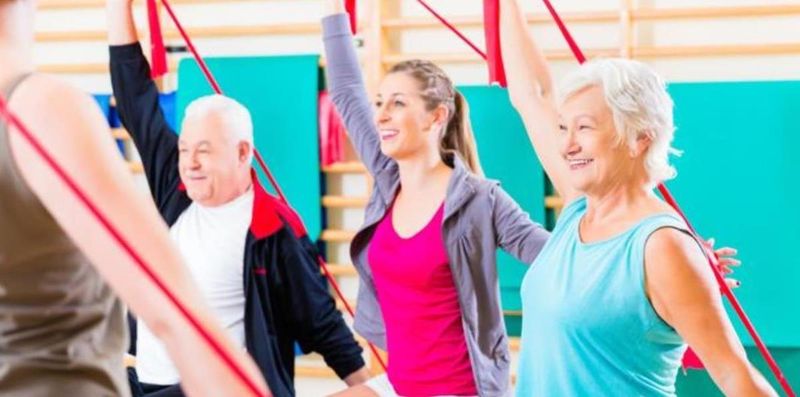Aerobic exercise may reduce aging-related dry eye symptoms
Key takeaways:
- Researchers randomized 60 people with dry eye disorder to aerobic exercise plus Mediterranean diet or exercise alone.
- Both groups had improvements in dry eye symptoms, particularly the exercise/diet group.
High-intensity interval aerobic exercise alone or with the Mediterranean diet may prevent or improve aging-related dry eye symptoms in older people with obesity and hypertension, according to data in the Irish Journal of Medical Science.
“This study proved that exercise can significantly relieve [dry eye] symptoms,” Ali Mohamed Ali Ismail, of the faculty of physical therapy at Cairo University, and colleagues wrote. “[Dry eye] relief can be also maximized by the additional effect of [Mediterranean diet] in obese hypertensive elderly with [dry eye].”

Researchers conducted a randomized, controlled trial of 60 people with obesity and hypertension, aged 65 years and older, who also had dry eye disorder. They randomly divided participants into an experimental group (n = 30), which received high-intensity interval aerobic exercise (HIIAE) while adhering to the Mediterranean diet, and a control group (n = 30), which only received HIIAE.
In this study, HIIAE consisted of participants riding an electronic bicycle for an average of 30 minutes, with a 5-minute warm-up phase, followed by 2-minute, high intensity intervals and 1-minute moderate bicycling rests repeated seven times. Each session concluded with a cool-down phase. Participants wore heart rate monitors on their wrists throughout each session.
Participants in the experimental group met weekly with a nutritionist who provided nutritional counseling and assessed diet adherence. They followed a meal plan that consisted of 50% carbohydrates, 35% fats and 15% protein.
Researchers reported a statistically significant decrease in weight in both groups, with a mean difference of 10.03 kg in the experimental group and 5.33 kg in the control group. BMI also decreased in both groups, with a mean difference of 3.46 kg/m2 and 1.9 kg/m2, respectively.
Significant decreases in systolic blood pressure were also reported in both groups, with differences of 6.53 mm Hg in the experimental group and 4.13 mm Hg in the control group. Similarly, diastolic blood pressure also decreased, with 8.03 mm Hg and 3.8 mm Hg differences, respectively.
Moreover, there were improvements in dry eye scoring system and Ocular Surface Disease Index questionnaire results, particularly among participants in the experimental group, as well as tear breakup time and Schirmer’s test.
“In light of the results presented in this research, [dry eye] patients who maintained a 6-month energy-expenditure protocol (a 30-min, high-intensity aerobic bicycling, three times per week) exhibited more significant improvements in subjective and objective [dry eye] parameters when this exercise protocol was accompanied by a dietary restriction program, the Mediterranean diet,” Ali Ismail and colleagues wrote.

